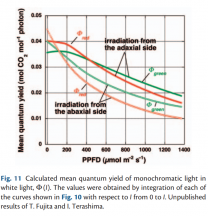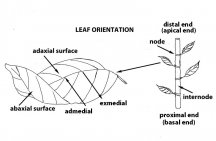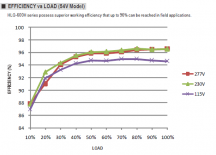My questions were mostly rhetorical, unless you had decent answers I hadn't considered.. and even your own dumb ass "answers" fail to answer the real question of.. why use my quote to start a thread? You say
and then start a thread with an "irrelevant" quote??
I'm just saying you could have accomplished all you set out to without pulling my quote out of nowhere and taking it completely away from context.. If you can't see how that's not something most people do, well I guess I understand why you would feel it appropriate to do in the first place.
Best of luck with your thread bro
Thanks. Ok, think i'm done for now:
Meanwell
claim 98% efficiency, whilst its proven more like 92% at higher wattages and lower lifespan, which is why I stated in one of my earlier posts if you going +300W you are better off getting inventronics as they are actually more efficient at higher wattage even though they state less.
Efficiency is usually rated/marketed at a specific load point. e.g. 50% load on the driver it is 98% efficient, but at 75-100% load is is closer to 90-92% efficient. I do not believe it is wrong for meanwell to rate their driver at 98% peak efficiency,
NOTE at 50% load. Whilst remaining in a certain range e.g. above 90% do be given a certain rating of efficiency. Normal PC PSU's also have a rating system, bronze, silver, gold, platinum, titanium rated efficiency, I hope that rings a bell. Those ratings also mean the PSU efficiency, consistency, stability, reliability safety features never drops below a certain percentage from 0-100% load and meat the respective criteria standards, which is how they receive their ratings. There are standards for efficiency ratings for power supplies like PC PSUs but i'm not sure if the same applies to LED drivers or if they fall under a different regulating/certification authority or what the requirements are for using a rating on the product, technically, meanwell is not lying about its efficiency, but it also does not give full truth as it depends on the customer's usage of their products and your experience may vary depending on your usage.
Where inventronics may be using
an average co-efficient to rate their drivers.
I hope this answers some questions or correct some statements made.
I purposefully withhold information in the hopes people would actually go out and do a bit more research. In some cases I may not know (highly likely), but then I will say I do not know, or I am not sure.
I in no way intended my quote of your words to disprove or shoot you down in any way. I did feel the direction of and discussion of said topic thread needed to be discussed in more depth thus a well deserved own thread. I also do not intend to come off as sarcastic, smarter or act in any way in which to offend any said person or company or whomever they represent.
If I had more time to spend on the forums I'd post better responses which took more time to explain. The fact that you are asking all these questions is a very good thing because it opens up discussion on topics never really discussed when it comes to what light to buy. Many people see lights and setups in youtube shows, or youtube grow influencers if you can call them that. I do feel with little effort and actual interest of communities that want to grow better together, knowledge is a powerful thing.
The more you know the easier you see through the bullshit and straight up marketing campaigns. I've gone to expos where people were supposed to explain how to grow your the best from seed to harvest. The whole time the chump was on stage he was upselling all his products on his online store and didn't explain a damn thing to +50 year olds that wants to grow his/her own medicine also attending the same expo as everyone else. Everything second or third sentence the "solution" to something is "you can buy x y z on our store for a b c". At no point did he explain on stage anything relating to the topic they claimed to be there for.
Not, how to guarantee germination of your bought seeds, to taking care of it during seedling stage. (if you smoke cigarettes wash your hands and where unpowdered sterile gloves handling the plant as they can get infected by a tabacco virus). Nothing, not soak the seed in de-chlorinated water for 12-24-48 hours. or scuffing a seed, or possibly a few drops of H peroxide, absolutely zero help to cannabis community. I do not assume the next person know as much as me or ever assume I know more than the next but I do have an urge share whatever I can, because believe it or not corporate has taken over the industry. Many people/businesses is in it solely for the money, and this, is sad.
Again, thank you all for your input on this thread, even Mr Quotesy, I don't think its illegal to quote anyone? jokes aside. Sincerely thanks to everyone.





